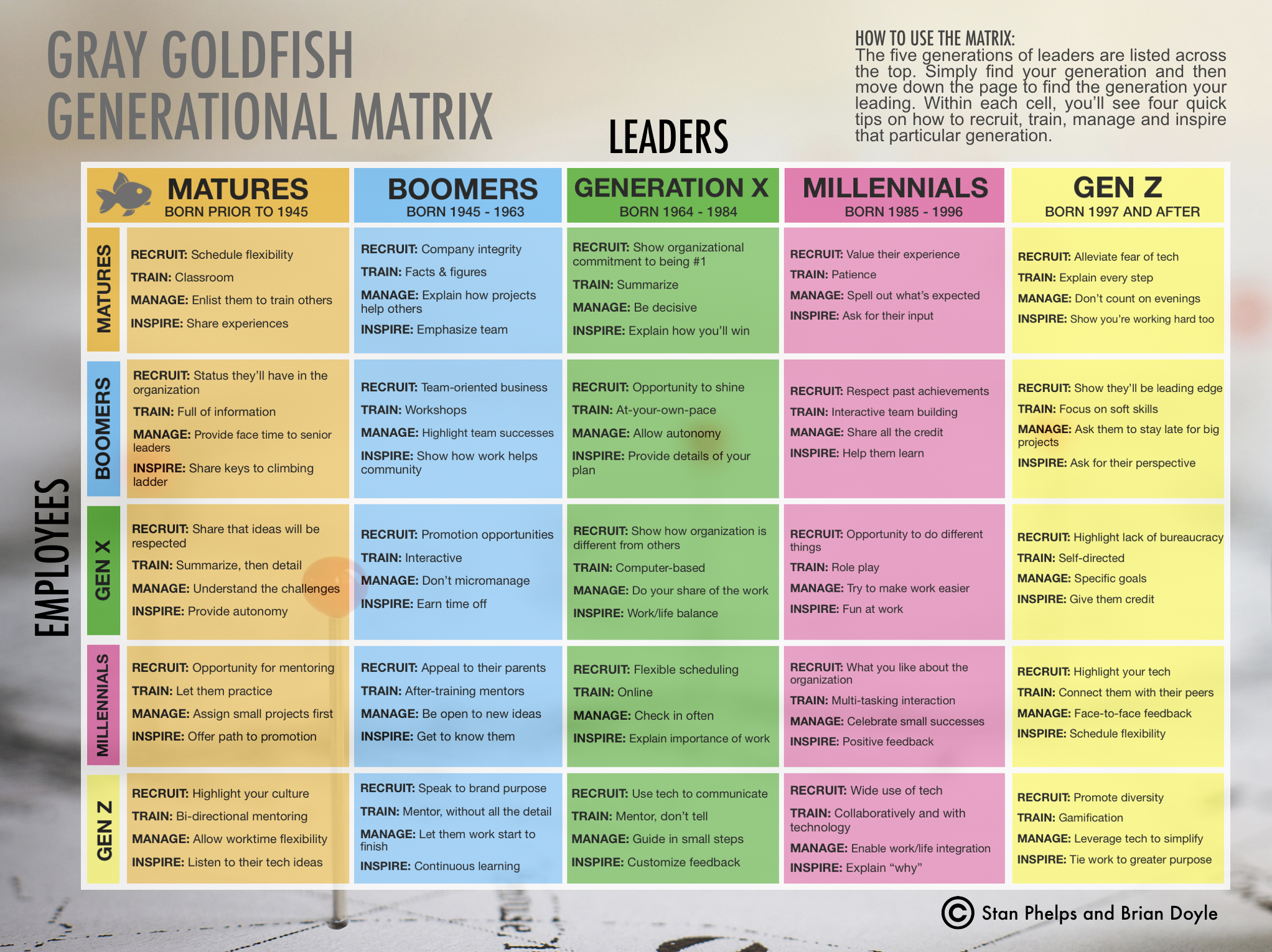LATE JUNE 2019
Why Every Leader Should Be Using The Generational Matrix
As Gen Z (born starting in 1997) begins their professional careers, we’re entering an era where we have five different generations in the workplace for the first time in US history, and all five of them can be in leadership roles. For leaders and managers, this provides a challenge. According to Carol Hymowitz in The Wall Street Journal:
“That means they must create opportunities for young employees to advance (or risk losing them) while also making sure veterans, whose skills they need in today’s tight labor market, don’t feel overlooked. And to maintain productivity and innovation, they must persuade employees of disparate ages to collaborate.”
Stan Phelps and Brian Doyle, authors of Gray Goldfish, created The Generational Matrix (below) to serve as a guide to help navigate this challenge. There are hundreds, if not thousands of articles and books titled “How To Lead Millennials,” or “How To Manage Millennials.” This is not that. The Generational Matrix, along with the material covered in Gray Goldfish, offer a more comprehensive view on what it means to lead and work in an increasingly intergenerational workplace.
Each generation has been shaped in part by their own upbringing, environment, and family. Simple generational categorizations can lead us to overlook this, so it’s become increasingly important to become aware of the many nuances and gray areas that make up each generation. Leaders can no longer have a one-size-fits-all approach to managing their employees. It’s not only ineffective, but with an increasingly diverse workplace, it’s a recipe for disaster because your employees will approach their work differently. As a modern professional, you must expand your understanding of intergenerational leadership, which will empower you to be more effective when recruiting, training, managing, and inspiring each generation.
Gray Goldfish approaches this by teaching you how to lead every generation in the context of your own generation. This means that you must understand your own generational tendencies as well of the tendencies of those you follow. For instance, Phelps and Doyle touched on the differences between Generation X and Millennials:
“We know that Generation X doesn’t always enjoy the touchy/feely aspects of leadership. At the same time, Millennials are used to and appreciate more frequent, positive feedback. Those styles don’t naturally go together, so Generation X needs to be particularly mindful of how to get the best out of their Millennial employees.”
This is one of many examples covered in Gray Goldfish, meant to highlight how important it is to be conscientious of the differences between yourself, who you lead, and whoever is leading you. The Generational Matrix acts as a valuable tool to remind yourself how to lead every generation, but only serves as a brief overview of the tactics and concepts covered in Gray Goldfish, written by Stan Phelps and Brian Doyle. If you’re interesting in navigating the gray areas to successfully lead every generation I encourage you to check out the book, and visit PurpleGoldfish.com to learn more!



